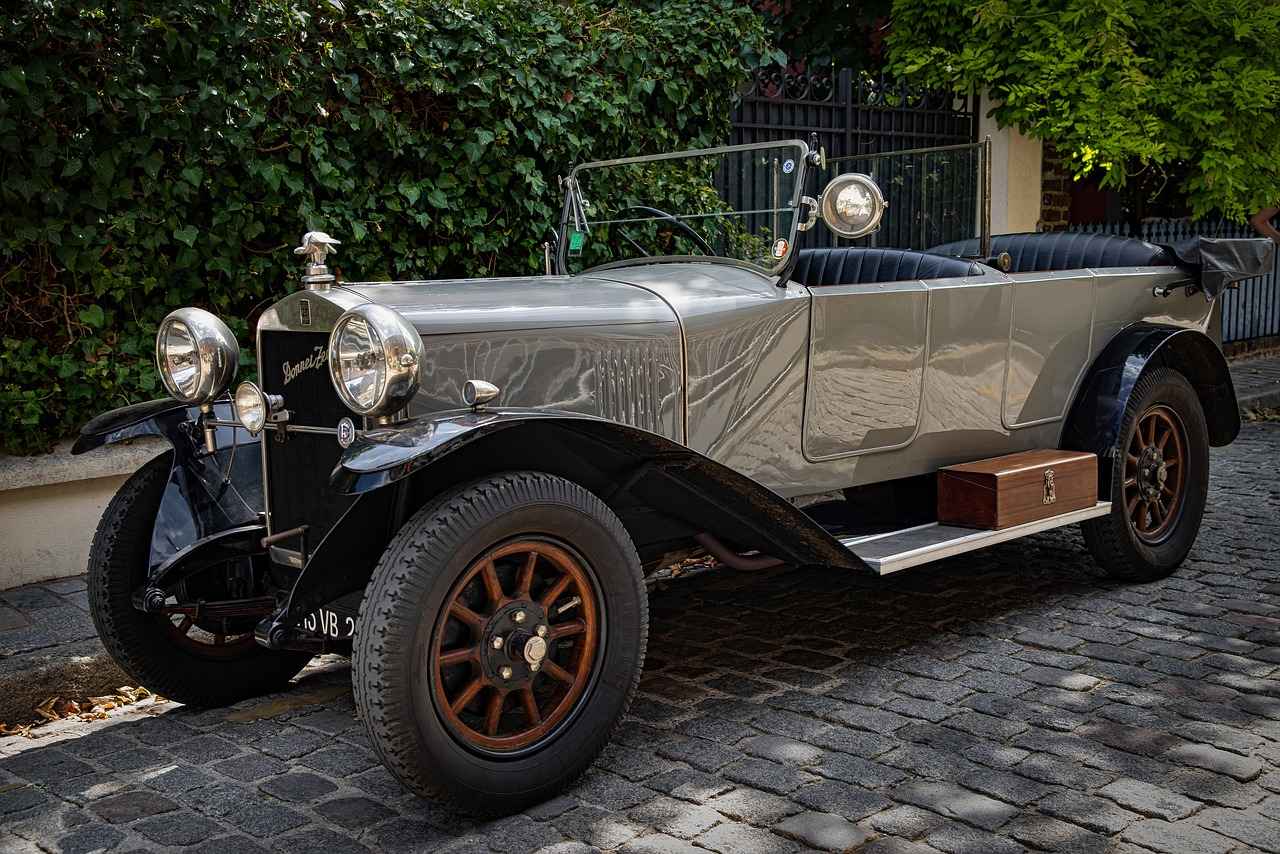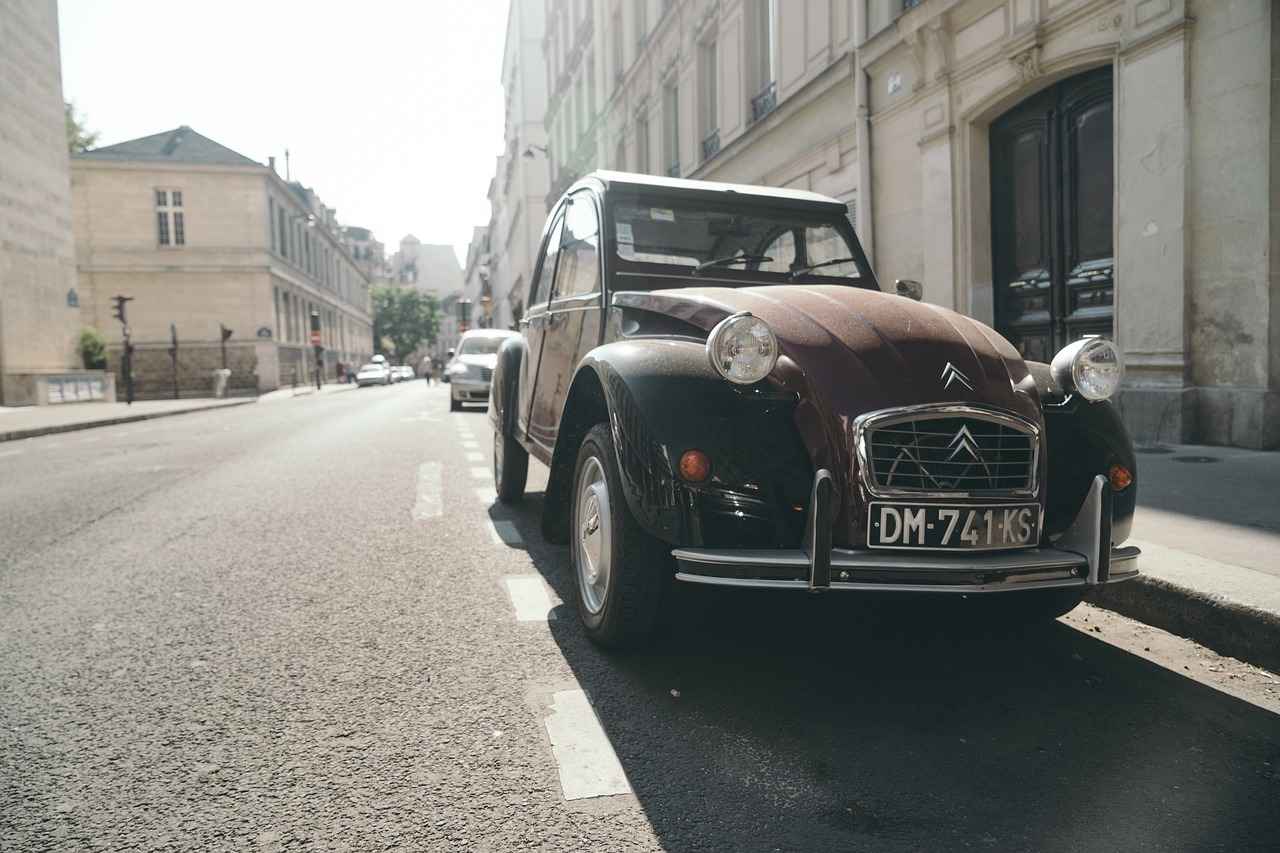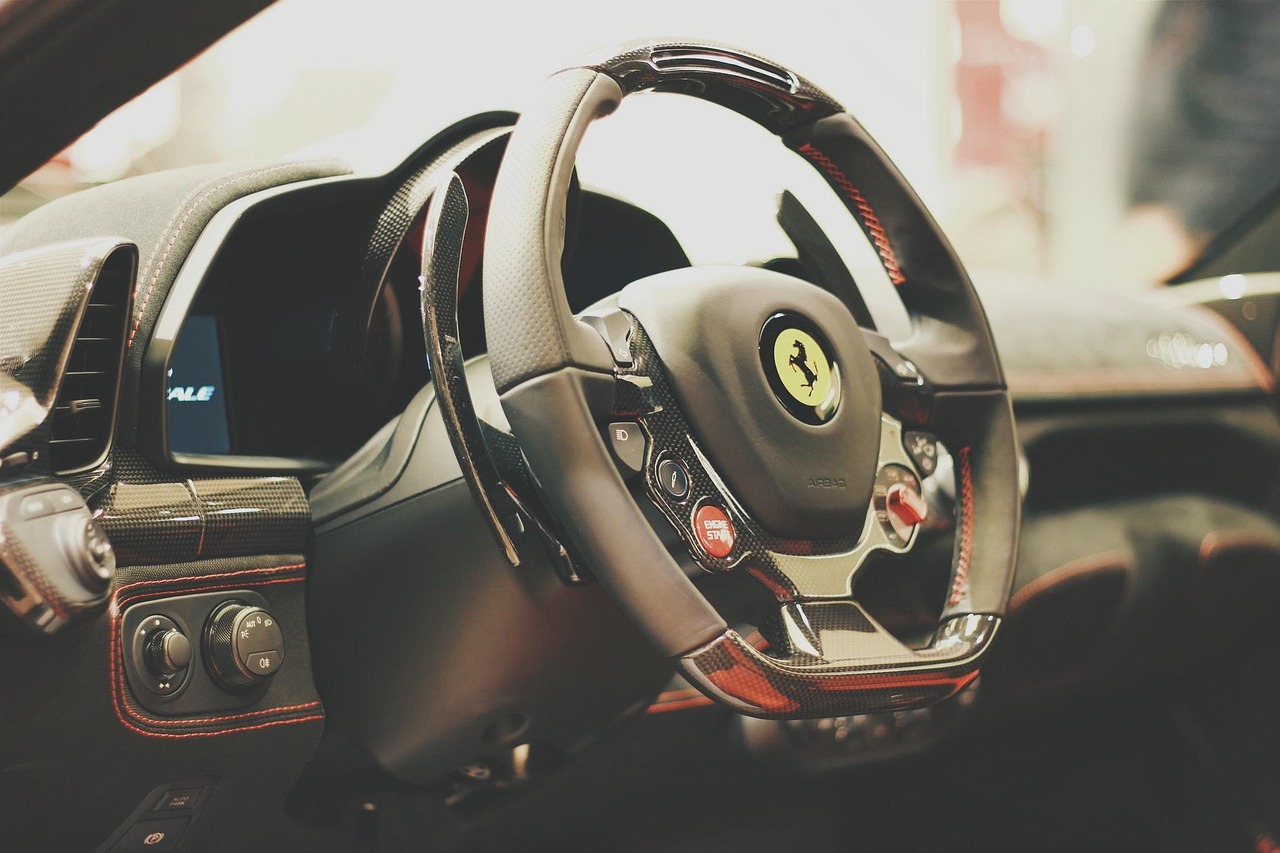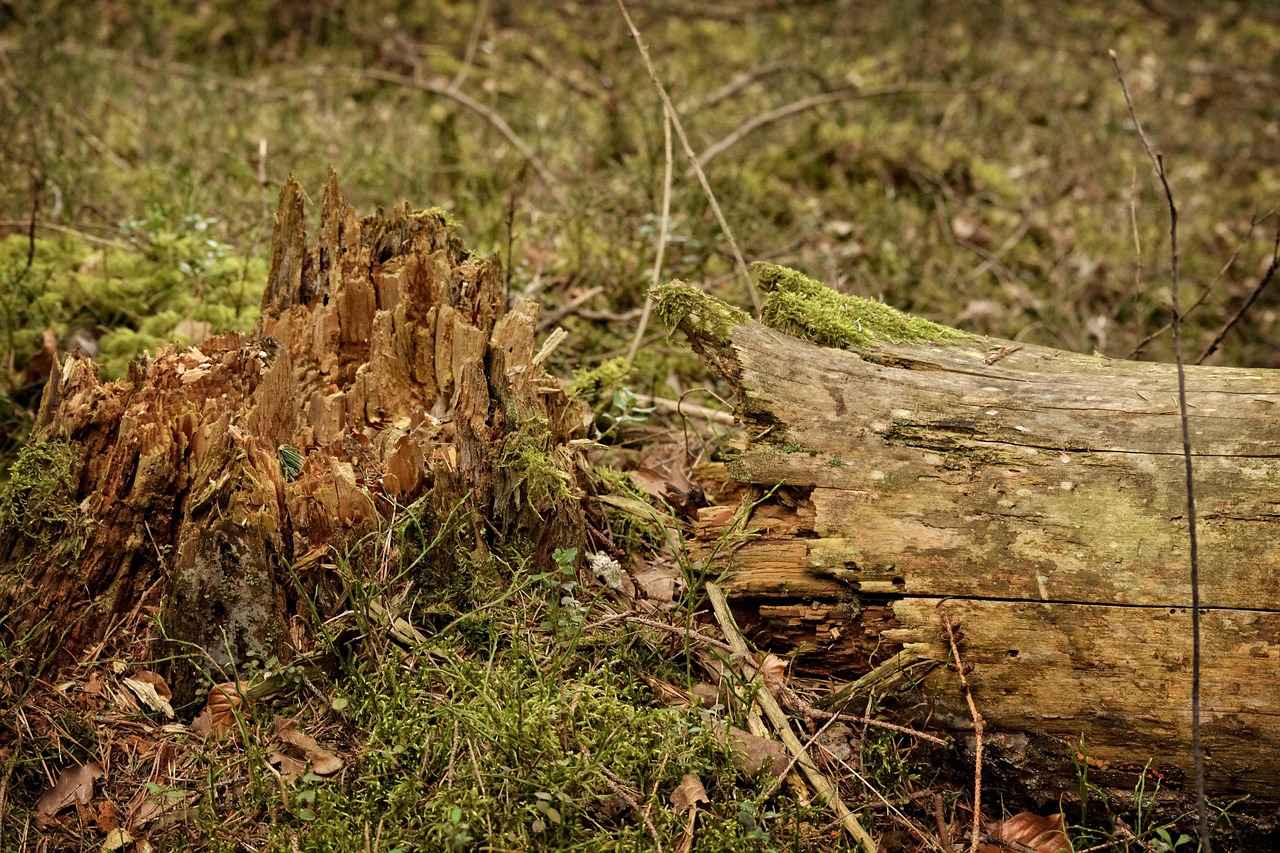This article delves into the timeline for wrapping a car, highlighting the various factors that can influence the duration of the project. For car owners contemplating this transformation, understanding the process is crucial for effective planning.
The time required for a car wrap can vary significantly due to several key factors:
- Size of the Vehicle: Larger vehicles, such as SUVs and trucks, typically take longer to wrap than standard cars.
- Complexity of the Design: Intricate designs or custom graphics require additional time for both design approval and installation.
- Experience of the Installer: Skilled installers can complete the job more efficiently, reducing overall project time.
Understanding the stages involved in a car wrap can help estimate the total time required:
The preparation phase is critical and can take several hours. It includes:
- Cleaning the Surface: A thorough cleaning is necessary to remove dirt and contaminants, typically taking about 1-2 hours.
- Repairs and Maintenance: If the vehicle has dents or scratches, these need to be repaired, which can add several hours to the process.
The installation phase is where the actual wrapping occurs. Depending on the complexity, this can take anywhere from a few hours to a couple of days.
The type of wrap can significantly impact the installation time:
- Vinyl Wraps vs. Paint Protection Films: Vinyl wraps are generally quicker to install than paint protection films, which require more precision.
- Custom Designs: Do They Take Longer? Custom designs often necessitate more time for both design approval and installation, extending the overall project timeline.
Taking proactive steps can help speed up the car wrap process:
- Selecting an Experienced Installer: Choosing a skilled installer can greatly reduce the time needed for a car wrap.
- Preparing Your Vehicle in Advance: Ensuring your vehicle is clean and free of damage before installation can save valuable time.
While the total time can vary, most car wrap projects are completed within 1 to 3 days. Understanding this average helps set realistic expectations for car owners.
- Standard Vehicles vs. Larger Vehicles: Standard-sized vehicles typically take less time to wrap compared to larger vehicles, which may require additional hours for complete coverage.
- Post-Installation Care: How Long Should You Wait? After installation, a waiting period is essential for the wrap to adhere properly. This may require a few hours to a day before the vehicle can be washed or exposed to harsh conditions.
In conclusion, understanding the timeline for wrapping a car involves considering various factors, including the vehicle’s size, the complexity of the design, and the experience of the installer. By preparing adequately and selecting the right professionals, car owners can ensure a smoother and more efficient car wrap process.

What Factors Influence the Time Required for a Car Wrap?
When considering a car wrap, many car owners often wonder, “How long will this project take?” The duration of a car wrap project can vary significantly based on several factors, including the vehicle’s size, the complexity of the design, and the experience of the installer. Understanding these elements can help set realistic expectations for anyone looking to transform their vehicle’s appearance.
The time required to complete a car wrap can differ widely, but several key factors play a pivotal role in determining the overall duration:
- Vehicle Size: Larger vehicles, such as trucks and SUVs, typically require more time to wrap than standard sedans due to their increased surface area.
- Design Complexity: Intricate designs with multiple colors, patterns, or custom graphics will take longer to install compared to simpler designs.
- Installer Experience: Skilled installers can complete projects more efficiently, often identifying and solving potential issues quicker than less experienced technicians.
- Type of Wrap Material: Different materials, such as vinyl or paint protection films, have varying installation times. Vinyl wraps are generally quicker to apply than more complex paint protection films.
Understanding the stages of the car wrap process is crucial for estimating the total time required. Each phase, from preparation to installation, contributes to the overall timeline:
Preparation involves cleaning and sometimes repairing the vehicle’s surface. This stage can take several hours, but it’s vital for ensuring a smooth and lasting wrap application.
- Cleaning the Surface: Thoroughly cleaning the car’s surface is necessary to remove dirt and contaminants. This step typically takes about 1-2 hours, depending on the vehicle’s condition.
- Repairs and Maintenance: If there are any dents or scratches, they need to be fixed before wrapping. This repair process can add additional time, sometimes up to several hours.
The installation phase is where the actual wrapping occurs. Depending on the complexity, this can take anywhere from a few hours to a couple of days.
Different types of wraps can impact the installation time. Understanding these materials helps in setting realistic expectations:
- Vinyl Wraps vs. Paint Protection Films: Vinyl wraps are generally quicker to install compared to paint protection films, which require more precision and care. This difference can affect the overall project timeline.
- Custom Designs: Custom designs often require more time for both design approval and installation. This can extend the project timeline significantly, depending on the intricacy of the design.
Taking proactive steps can help speed up the car wrap process. From choosing the right installer to preparing your vehicle, certain actions can streamline the project:
- Selecting an Experienced Installer: Choosing a skilled installer can greatly reduce the time needed for a car wrap. Experienced professionals work more efficiently and can anticipate potential issues.
- Preparing Your Vehicle in Advance: By ensuring your vehicle is clean and free of damage before the installation, you can save valuable time during the preparation phase, allowing for a smoother project flow.
While the total time can vary, most car wrap projects are completed within 1 to 3 days. Understanding this average helps set expectations for car owners:
- Standard Vehicles vs. Larger Vehicles: Standard-sized vehicles typically take less time to wrap compared to larger vehicles like SUVs or vans, which may require additional hours for complete coverage.
- Post-Installation Care: After installation, a waiting period is essential for the wrap to adhere properly. This may require a few hours to a day before the vehicle can be washed or exposed to harsh conditions.
In conclusion, understanding the various factors that influence the duration of a car wrap project can help car owners make informed decisions. By considering vehicle size, design complexity, and the experience of the installer, one can better anticipate the timeline for this exciting vehicle transformation.

How Long Does Each Stage of the Car Wrap Process Take?
Understanding the various stages of the car wrap process is essential for estimating the total time required for your project. Each phase, from preparation to installation, plays a critical role in determining the overall timeline. In this section, we will delve deeper into each stage, providing insights into what to expect and how long each step typically takes.
The preparation phase is arguably one of the most important steps in the car wrap process. This phase can take anywhere from 3 to 6 hours, depending on the condition of the vehicle and the extent of preparation needed.
- Cleaning the Surface: A thorough cleaning is essential to remove dirt, oil, and other contaminants. This process usually takes 1 to 2 hours, depending on how dirty the vehicle is.
- Repairs and Maintenance: If there are any dents, scratches, or other imperfections, these need to be addressed before the wrap is applied. This step can add several more hours to the preparation time.
The installation stage is where the magic happens. This phase involves applying the vinyl wrap to the vehicle and can take anywhere from 4 hours to 2 days, based on the complexity of the design and the skill of the installer.
- Standard Installation: For simpler designs and smaller vehicles, the installation can be completed in a day.
- Complex Designs: Custom designs or larger vehicles like SUVs may require additional time, sometimes extending the installation phase to a couple of days.
After the installation is complete, it’s important to allow the wrap to adhere properly. This waiting period typically lasts 24 hours before washing or exposing the vehicle to harsh conditions.
Several factors can impact the time required for each stage of the car wrap process:
- Vehicle Size: Larger vehicles naturally take longer to wrap compared to standard-sized cars.
- Design Complexity: Intricate designs that require more precision can significantly extend both preparation and installation times.
- Installer Experience: A skilled installer can complete the job more efficiently, potentially reducing the overall time required.
Taking proactive steps can streamline the car wrap process:
- Selecting an Experienced Installer: Choosing a professional with a proven track record can save time and ensure a high-quality finish.
- Preparing Your Vehicle: Cleaning and addressing any necessary repairs before the installation can significantly reduce preparation time.
By understanding the stages of the car wrap process and the factors that influence them, car owners can better estimate the time required for their projects. This knowledge not only helps in planning but also ensures a smoother and more efficient wrapping experience.
Preparation: Why Is It Essential?
When it comes to wrapping a car, the preparation stage is crucial for ensuring a successful outcome. This phase is often overlooked, yet it plays a significant role in the overall quality and longevity of the wrap. Proper preparation involves not only cleaning the vehicle but also addressing any surface imperfections that may hinder the application process.
The preparation process can be divided into two primary tasks: cleaning and repairing.
Thoroughly cleaning the vehicle’s surface is essential for removing dirt, grease, and other contaminants that can affect the adhesion of the wrap. A clean surface ensures that the vinyl adheres properly, preventing issues such as bubbling or peeling in the future. This step typically takes about 1-2 hours, depending on the vehicle’s condition. It’s important to use appropriate cleaning agents and techniques to avoid damaging the paintwork.
If there are any dents, scratches, or other imperfections on the vehicle’s surface, they need to be addressed before the wrap is applied. Failing to repair these issues can lead to an uneven appearance and may compromise the wrap’s durability. This repair process can add additional time, sometimes requiring several hours, depending on the extent of the damage. Common repairs may include:
- Filling in scratches with touch-up paint.
- Sanding down rough areas to create a smooth surface.
- Fixing dents to ensure a flat application area.
Investing time in the preparation phase can significantly affect the overall timeline of the car wrap project. A well-prepared vehicle allows for a smoother installation process, which can ultimately reduce the time spent on the actual wrapping. In contrast, inadequate preparation can lead to complications during installation, requiring additional adjustments that extend the project timeline.
To ensure that your vehicle is ready for wrapping, consider the following tips:
- Perform a thorough inspection of the vehicle’s surface for any imperfections.
- Use a high-quality car wash and detailing products to clean the surface.
- Consult with your installer about any specific preparation requirements or recommendations.
In summary, the preparation stage is a vital component of the car wrap process. By dedicating the necessary time to clean and repair the vehicle’s surface, car owners can ensure a smooth and lasting wrap application. This attention to detail not only enhances the final appearance but also contributes to the longevity of the wrap, making it a worthwhile investment in the long run.
Cleaning the Surface
When it comes to wrapping your vehicle, is a crucial first step that should never be overlooked. This process is essential for ensuring that the wrap adheres properly and lasts for a long time. Without a thorough cleaning, dirt and contaminants can compromise the quality and durability of the wrap, leading to peeling and fading over time.
Cleaning the surface of your car is not just about aesthetics; it’s about creating a solid foundation for the wrap. Dust, grease, and grime can prevent the adhesive from forming a strong bond with the vehicle’s surface. If the surface isn’t adequately prepared, it can lead to premature failure of the wrap.
The cleaning process typically involves several steps, which can take anywhere from 1 to 2 hours depending on the vehicle’s condition. Here’s a breakdown of what to expect:
- Washing: Start by washing the car with a high-quality car soap to remove dirt and grime.
- Drying: After washing, dry the vehicle thoroughly to prevent water spots, which can interfere with the wrap’s adhesion.
- Decontaminating: Use a clay bar or chemical decontaminants to eliminate embedded contaminants that regular washing might miss.
- Inspecting: Check for any scratches, dents, or imperfections that may need repair before wrapping.
The time it takes to clean your vehicle can vary significantly based on its condition. For example:
- New Cars: Typically require less time as they are usually cleaner and have fewer contaminants.
- Older or Neglected Cars: These may take longer due to accumulated dirt, grime, and potential rust.
While some car enthusiasts may choose to clean their vehicles themselves, hiring a professional can save time and ensure that the job is done correctly. Professionals have the right tools and expertise to identify and address issues that a novice might overlook.
Skipping the cleaning process can lead to several risks, including:
- Poor Adhesion: A dirty surface can result in the wrap not adhering properly, leading to bubbles and peeling.
- Shortened Lifespan: Contaminants can cause the wrap to degrade faster, resulting in the need for premature replacement.
- Aesthetic Issues: Dirt trapped under the wrap can create an unsightly appearance, detracting from the vehicle’s overall look.
In conclusion, investing time in thoroughly cleaning your vehicle’s surface is essential for a successful car wrap project. Not only does it enhance the appearance of your vehicle, but it also ensures that the wrap adheres properly and lasts longer. Whether you choose to do it yourself or hire a professional, make sure that this step is not overlooked in the wrapping process.
Repairs and Maintenance
When considering a car wrap, one crucial step that often gets overlooked is the repair and maintenance of the vehicle’s surface. Before any wrapping can take place, it is essential to ensure that the car is in optimal condition. This process not only improves the aesthetics but also enhances the longevity of the wrap itself.
Any dents or scratches present on the vehicle’s surface can significantly affect the final appearance of the wrap. If these imperfections are not addressed, they may become more pronounced after the wrap is applied, leading to an unsatisfactory finish. Moreover, the wrap may not adhere properly to damaged areas, which can result in peeling or bubbling over time.
The repair process can vary in duration, often taking up to several hours depending on the extent of the damage. Minor scratches may only require a quick buffing, while deeper dents could necessitate more extensive bodywork. Understanding the time commitment involved in repairs is vital for planning your car wrap project.
- Minor Scratches: These can often be polished out in about 1 hour.
- Medium Dents: Repairing these may take anywhere from 2 to 4 hours, depending on the technique used.
- Severe Damage: Extensive repairs could require a full day or more, especially if repainting is involved.
Before taking your vehicle in for repairs, it’s wise to conduct a thorough inspection. Look for any imperfections that may need attention. Creating a checklist can help ensure that nothing is overlooked:
- Inspect the body for dents and scratches- Check for rust or corrosion- Ensure all panels are aligned and secure
Selecting a qualified repair shop can make all the difference. Look for a shop that specializes in automotive bodywork and has experience with vehicles that will be wrapped. Ask for recommendations and check online reviews to ensure you choose a reputable service.
While the cost of repairs can vary widely based on location and the severity of the damage, it is important to factor these expenses into your overall budget for the car wrap. Investing in quality repairs now can save you money in the long run by ensuring the wrap lasts longer and maintains its appearance.
In summary, addressing any dents or scratches on your vehicle is a critical step in the car wrap process. By taking the time to repair these issues before wrapping, you can ensure a smoother, more professional finish that enhances both the look and durability of your wrap.
Installation: What Does It Entail?
The installation phase of a car wrap is a critical step where the transformation truly begins. This is when the vinyl material is applied to the vehicle’s surface, and it can be a meticulous process. Depending on various factors, the installation can take anywhere from a few hours to a couple of days. Understanding the intricacies of this phase can help car owners set realistic expectations and prepare adequately.
The time required for installation is influenced by several key elements:
- Vehicle Size: Larger vehicles, such as trucks or SUVs, naturally require more time to cover compared to standard cars.
- Design Complexity: Simple designs may be quicker to install, while intricate graphics or custom designs can significantly extend the installation time.
- Installer Experience: Skilled installers can complete the job more efficiently, minimizing the overall time required.
The installation process can be divided into several stages, each contributing to the overall timeline:
- Preparation: Before the actual wrapping begins, the vehicle must be thoroughly cleaned and prepped. This can take several hours, depending on the condition of the car.
- Application: The actual wrapping involves carefully applying the vinyl to the vehicle. This step requires precision and can take anywhere from a few hours to a full day.
- Trimming and Finishing: Once the wrap is applied, excess vinyl is trimmed, and edges are sealed. This final touch ensures durability and can add additional time to the project.
The installation phase is crucial for several reasons:
- Quality of Finish: A well-installed wrap looks seamless and professional, enhancing the vehicle’s appearance.
- Longevity: Proper installation ensures that the wrap adheres well and lasts longer, protecting the vehicle’s paint underneath.
- Preventing Damage: Inadequate installation can lead to bubbles, peeling, or other issues that compromise the wrap’s integrity.
While the installation process is straightforward for experienced professionals, there can be challenges:
- Weather Conditions: High humidity or extreme temperatures can affect the adhesive properties of the vinyl.
- Surface Imperfections: Dents or scratches on the vehicle’s surface can complicate the installation, requiring additional repairs.
- Design Adjustments: If the design is complex, installers may need to make adjustments during the application, which can extend the time required.
To facilitate a seamless installation process, consider the following:
- Choose a Reputable Installer: Look for experienced professionals with positive reviews to ensure quality work.
- Prepare Your Vehicle: Ensure your car is clean and free from damage before the installation day.
- Communicate Clearly: Discuss your design expectations and any concerns with the installer beforehand to avoid misunderstandings.
In conclusion, understanding the installation phase of a car wrap is essential for any car owner considering this transformation. By being aware of the factors that influence the duration and taking proactive steps to prepare, you can ensure a successful and timely wrapping experience.

How Does the Type of Wrap Affect Installation Time?
When considering a car wrap, one of the most critical factors to evaluate is how the type of wrap affects installation time. Different materials, such as vinyl wraps and paint protection films, have unique characteristics that can significantly influence the duration of the installation process. Understanding these differences is essential for setting realistic expectations regarding your car wrap project.
Vinyl wraps are a popular choice for many car owners due to their versatility and ease of application. Typically, vinyl wraps are designed for quick installation, making them ideal for those looking to transform their vehicle’s appearance without a lengthy commitment. On average, the installation of a vinyl wrap can take anywhere from 4 to 8 hours, depending on the size of the vehicle and the complexity of the design.
Paint protection films (PPF), on the other hand, require a more meticulous approach during installation. These films are designed to protect the vehicle’s paint from scratches, chips, and other environmental damage. The installation process for PPF is generally more time-consuming, often ranging from 1 to 3 days to ensure a perfect fit and finish. The need for precision in cutting and aligning the film can add significant time to the project.
The complexity of the design plays a vital role in determining installation time. A simple color change might only require a few hours, while a custom design with intricate patterns or multiple colors can take much longer. Custom designs often necessitate more time for both design approval and installation, which can extend the overall project timeline by several hours or even days.
The experience of the installer can also greatly influence the duration of the car wrap process. Skilled professionals can complete installations more efficiently, as they are familiar with common pitfalls and best practices. An experienced installer can often anticipate challenges and resolve them quickly, reducing the overall time required for the project.
Preparation is a crucial step that can affect installation time. Before a wrap can be applied, the vehicle must be thoroughly cleaned and inspected for any damage that needs repair. This preparation phase can take anywhere from 1 to 3 hours, depending on the vehicle’s condition. If repairs are needed, this can add additional time to the project, so it’s wise to factor this into your timeline.
To expedite the car wrap process, consider taking proactive steps:
- Select an experienced installer who can work efficiently and effectively.
- Prepare your vehicle in advance by ensuring it is clean and free of damage.
- Choose simpler designs if time is a concern, as they typically require less installation time.
By understanding how different types of wraps affect installation time, car owners can make informed decisions about their wrapping projects. Whether opting for a quick vinyl wrap or a more protective paint protection film, knowing the expected timelines helps in planning and executing a successful vehicle transformation.
Vinyl Wraps vs. Paint Protection Films
When considering a vehicle transformation, understanding the differences between vinyl wraps and paint protection films is crucial. Both options offer unique benefits, but they also come with varying installation times and requirements. This section delves into how these two materials compare, particularly in terms of installation duration.
Vinyl wraps are a popular choice for vehicle customization. Made from durable vinyl material, these wraps can change the color of a car or add graphics, providing a fresh look without the permanence of paint. The installation process for vinyl wraps is typically quicker than that of paint protection films, making them an appealing option for those looking for a fast transformation.
Paint protection films (PPF) are designed to protect a vehicle’s paint from scratches, chips, and environmental damage. Unlike vinyl wraps, PPF is a clear, self-healing material that maintains the original color of the vehicle. However, the installation process for PPF is more intricate, requiring precise application to ensure optimal protection.
The primary reason for the difference in installation times between vinyl wraps and paint protection films lies in their application techniques. Vinyl wraps can often be installed in a matter of hours, especially for standard vehicles. In contrast, paint protection films require meticulous attention to detail, which can extend the installation time to a full day or more, depending on the vehicle size and complexity.
- Vehicle Size: Larger vehicles naturally take longer to wrap or cover with PPF.
- Design Complexity: Intricate designs or custom graphics can extend the installation duration for vinyl wraps.
- Installer Experience: Skilled professionals can complete installations more efficiently, regardless of the material used.
Indeed, many car owners opt for a hybrid approach by using vinyl wraps for aesthetics and paint protection films for safeguarding vulnerable areas. This combination can provide the best of both worlds, but it may also require careful planning to coordinate installation times effectively.
Choosing between vinyl wraps and paint protection films ultimately depends on your specific needs. If you’re looking for a quick aesthetic change, vinyl wraps are the way to go. However, if your primary concern is protecting your vehicle’s paint, you might want to invest in paint protection films, keeping in mind the longer installation time.
In conclusion, understanding the differences between vinyl wraps and paint protection films can help you make an informed decision that aligns with your goals. Whether you prioritize speed or protection, both options offer unique advantages that cater to different preferences.
Custom Designs: Do They Take Longer?
When considering a car wrap, custom designs often emerge as an appealing option for those looking to make a statement. However, it is essential to understand that these unique designs can significantly impact the overall timeline of your project. In this section, we will explore how custom designs can extend the time required for both design approval and installation.
The first step in executing a custom car wrap is obtaining the necessary approvals. This phase can be more complex than standard designs due to the need for client input and adjustments. The approval process typically involves:
- Concept Development: Initial sketches and digital mock-ups are created, which may take several days depending on the complexity.
- Client Feedback: Clients often request modifications, which can lead to multiple rounds of revisions.
- Final Approval: Once the design meets the client’s expectations, final approval is required before moving to installation.
Once the design is approved, the next stage is installation. The intricacy of the custom design will play a crucial role in determining how long the installation takes. Factors to consider include:
- Detail Level: Highly detailed designs may require more careful application, leading to longer installation times.
- Multiple Colors: Designs with several colors or gradients can complicate the installation process, as each layer must be applied with precision.
- Special Effects: If the design includes unique finishes or textures, additional time may be needed to ensure a flawless application.
Different installation techniques may be employed for custom designs, each affecting the timeline:
- Standard Application: For simpler designs, the installation can be completed in a few hours.
- Advanced Techniques: Custom installations may require advanced techniques such as contouring and wrapping around complex shapes, which can extend the process to a full day or more.
While custom designs may inherently take longer, there are several strategies to minimize delays:
- Clear Communication: Establishing clear communication with your designer and installer can expedite the approval process.
- Realistic Expectations: Setting realistic deadlines and understanding the time commitment involved in custom designs will help you plan better.
- Pre-Installation Preparation: Ensuring your vehicle is ready for installation can save precious time. This includes cleaning and addressing any surface issues beforehand.
In summary, while custom designs can significantly enhance the visual appeal of your vehicle, they often require more time for both design approval and installation. By understanding the factors that contribute to these extended timelines and taking proactive steps, you can ensure a smoother and more efficient car wrap process.

What Can You Do to Expedite the Car Wrap Process?
When it comes to wrapping a car, time efficiency is often a significant concern for car owners. Understanding how to expedite the car wrap process can lead to a smoother experience and quicker results. Below are some effective strategies to consider.
Choosing an experienced installer is one of the most important steps you can take to speed up the car wrap process. An expert installer not only works faster but also has the skills to handle potential challenges that may arise during installation. Look for reviews and testimonials to ensure you select a reputable professional who understands the nuances of car wrapping.
Preparation is key to a successful car wrap. Here are some essential actions to take:
- Thorough Cleaning: Ensure your vehicle is meticulously cleaned to remove dirt, grease, and any contaminants. This step can take 1-2 hours but is crucial for ensuring the wrap adheres properly.
- Addressing Damage: Inspect your vehicle for any dents or scratches. Repairing these imperfections before wrapping can save time and ensure a flawless finish.
- Removing Accessories: Take off any removable parts such as mirrors, emblems, and trim. This will simplify the installation process and lead to better coverage.
The type of material used for the wrap can significantly affect the installation time. For instance:
- Vinyl Wraps: Generally, vinyl wraps are quicker to install than paint protection films. They are easier to manipulate and apply, allowing for a faster project completion.
- Paint Protection Films: These require more precision and care during installation, which can extend the timeline. Understanding the differences can help you set realistic expectations.
If you’re considering a custom design for your wrap, be aware that it may take longer than standard options. Custom designs often require additional time for:
- Design Approval: The design phase can involve back-and-forth communication with the designer, which may prolong the project.
- Installation Complexity: Intricate designs can be more challenging to install, requiring extra care and attention to detail.
Maintaining open lines of communication with your installer can greatly enhance the efficiency of the project. Discuss your expectations, timeline, and any concerns upfront to avoid misunderstandings that could delay the process.
While the duration can vary, most car wrap projects can be completed within 1 to 3 days. Factors such as vehicle size and design complexity play a significant role in determining the exact timeframe. For example:
- Standard Vehicles: Typically take less time to wrap compared to larger vehicles like SUVs or vans.
- Post-Installation Care: After installation, it’s crucial to allow the wrap to adhere properly. This may require a waiting period of a few hours to a day before washing or exposing the vehicle to harsh conditions.
By taking these proactive steps, you can significantly streamline the car wrap process, ensuring that your vehicle transformation is completed efficiently and to your satisfaction.
Selecting an Experienced Installer
When it comes to wrapping your vehicle, one of the most critical decisions you can make is . The skill and expertise of the installer can significantly influence not only the quality of the wrap but also the overall time required to complete the project. In this section, we will explore why choosing a skilled installer is essential and how it can streamline your car wrap experience.
Experienced installers bring a wealth of knowledge and skills to the table. They have likely encountered a variety of vehicles and wrap materials, which allows them to work more efficiently. Here are some key reasons why experience matters:
- Efficiency: Skilled professionals can execute the installation process faster. They know the best techniques to apply the wrap without wasting time.
- Problem Anticipation: An experienced installer can foresee potential issues that may arise during the installation. This foresight allows them to address problems proactively, minimizing delays.
- Quality Assurance: With years of practice, seasoned installers produce higher-quality results, ensuring that the wrap adheres properly and looks flawless.
When searching for a qualified installer, consider the following factors:
- Portfolio: Review their previous work to assess the quality of their installations. A strong portfolio is a good indicator of their skills.
- Customer Reviews: Look for testimonials or reviews from previous clients. Positive feedback can provide insight into their reliability and professionalism.
- Certifications: Some installers may have certifications from manufacturers, indicating they have received specialized training in applying specific materials.
Preparation can also play a significant role in expediting the car wrap process. Here are some steps you can take:
- Clean Your Vehicle: Ensure that your car is thoroughly washed and free of any dirt or debris. A clean surface allows for better adhesion and reduces installation time.
- Address Any Repairs: If your vehicle has dents or scratches, consider getting these fixed before the wrap installation. This can save time and improve the final appearance of the wrap.
Opting for an experienced installer not only saves time but also provides numerous benefits:
- Longevity: A professionally installed wrap is more likely to last longer, as it is applied correctly and securely.
- Enhanced Appearance: Skilled installers can ensure that the wrap fits seamlessly, enhancing the overall look of your vehicle.
- Warranty Protection: Many professional installers offer warranties on their work, giving you peace of mind in case of any issues.
In summary, selecting an experienced installer is a crucial step in the car wrap process. By investing time in finding the right professional, you can ensure a faster, smoother, and more successful wrap installation. Remember, a well-executed car wrap not only transforms the appearance of your vehicle but also protects its surface, making it a worthwhile investment.
Preparing Your Vehicle in Advance
When it comes to wrapping your vehicle, preparation is key. A well-prepared car not only enhances the quality of the wrap but also saves valuable time during the installation process. By taking the time to ensure your vehicle is clean and free of damage, you can facilitate a smoother workflow and improve the overall outcome of the project.
Proper preparation is essential for several reasons:
- Surface Adhesion: A clean surface allows the wrap material to adhere properly, reducing the risk of peeling or bubbling.
- Visual Appeal: A damage-free vehicle ensures that the wrap looks seamless and professional.
- Time Efficiency: Addressing potential issues beforehand can significantly reduce installation time.
Here are some important steps to consider when preparing your vehicle:
- Thorough Cleaning: Start by washing your vehicle to remove dirt, grime, and any wax residues. This process typically takes 1 to 2 hours depending on the vehicle’s condition.
- Inspect for Damage: Look for any dents, scratches, or imperfections. These need to be repaired to ensure a smooth application.
- Drying: After washing, allow the vehicle to dry completely. Any moisture can interfere with the adhesive properties of the wrap.
- Remove Accessories: Take off any removable parts like antennas, mirrors, or trim pieces that could complicate the wrapping process.
If your vehicle has noticeable damage, you should plan for additional time to make necessary repairs. Simple touch-ups can often be done in a few hours, while more extensive bodywork may require a day or more. Addressing these issues upfront is crucial for ensuring that the wrap adheres correctly and looks its best.
Failing to prepare your vehicle adequately can lead to several problems:
- Poor Adhesion: Wraps applied to dirty or damaged surfaces may not stick properly, leading to premature peeling.
- Increased Costs: If the wrap needs to be redone due to poor preparation, it can significantly increase your overall costs.
- Time Delays: Additional time may be needed to address issues that could have been resolved during the preparation phase.
To make your vehicle preparation as efficient as possible, consider the following tips:
- Plan Ahead: Schedule your cleaning and repairs well in advance of the installation date.
- Use Quality Products: Invest in high-quality cleaning supplies and repair materials to ensure the best results.
- Consult Professionals: If you’re unsure about the condition of your vehicle, seeking advice from a professional can save you time and effort.
By taking these steps, you can ensure that your vehicle is ready for its wrap, ultimately leading to a more efficient installation process and a stunning final result.

What Is the Average Timeframe for a Complete Car Wrap?
When considering a car wrap, one of the most common questions is, “What is the average timeframe for a complete car wrap?” Understanding the typical duration of a car wrap project is essential for car owners planning this transformation. While the total time can vary, most car wrap projects are completed within 1 to 3 days. This timeframe allows for various stages, including preparation, installation, and post-installation care, which are crucial for achieving a high-quality finish.
The time it takes to wrap a car can depend on several factors:
- Vehicle Size: Larger vehicles, such as SUVs or trucks, generally require more time than standard sedans.
- Design Complexity: Intricate designs or custom graphics may extend the installation time significantly.
- Installer Experience: Skilled installers can often complete the job more quickly and efficiently.
Understanding the different stages of the car wrap process can provide insight into the overall timeline:
Preparation is critical and involves two main steps:
- Cleaning: A thorough cleaning of the vehicle’s surface is essential to ensure proper adhesion. This process typically takes about 1-2 hours.
- Repairs: Any necessary repairs, such as fixing dents or scratches, can add additional time, sometimes extending the preparation phase by several hours.
The actual installation of the wrap can take anywhere from a few hours to a couple of days. Factors that can influence this duration include:
- Type of Wrap: Vinyl wraps are generally quicker to install compared to paint protection films, which require meticulous attention to detail.
- Custom Designs: If the design is complex or requires multiple colors, this can significantly increase installation time.
The average time for wrapping a vehicle can vary based on its type:
- Standard Vehicles: Typically completed within 1 to 2 days.
- Larger Vehicles: SUVs and vans may take 2 to 3 days due to their size and surface area.
After the wrap is installed, it’s important to allow adequate time for the wrap to adhere properly. This waiting period can range from a few hours to a full day before the vehicle can be washed or exposed to harsh conditions. Proper post-installation care ensures the longevity of the wrap.
To help streamline the car wrap process, consider the following:
- Select an Experienced Installer: A skilled installer can significantly reduce the time needed for a car wrap.
- Prepare Your Vehicle Ahead of Time: Ensuring your vehicle is clean and free of damage can save valuable time during the preparation phase.
In summary, while most car wrap projects can be completed within 1 to 3 days, various factors influence this timeframe. By understanding these elements and taking proactive steps, car owners can set realistic expectations and ensure a smooth wrapping process.
Standard Vehicles vs. Larger Vehicles
When considering a car wrap, one of the most significant factors influencing the time required for installation is the size of the vehicle. Standard-sized vehicles, such as sedans and hatchbacks, typically take less time to wrap compared to their larger counterparts, like SUVs and vans. This difference in time can be attributed to various factors that play a crucial role in the wrapping process.
Why Do Standard Vehicles Take Less Time to Wrap?
- Surface Area: Standard vehicles have a smaller surface area, which means there is less vinyl to apply. This reduction in surface area translates directly into less time spent on installation.
- Complexity of Design: Generally, standard vehicles have simpler shapes and fewer curves than larger vehicles. This simplicity allows for quicker application and fewer adjustments during the wrapping process.
- Accessibility: The smaller size of standard vehicles often makes them easier to maneuver in the workspace, allowing the installer to work more efficiently.
Challenges of Wrapping Larger Vehicles
In contrast, larger vehicles like SUVs and vans present unique challenges that can extend the wrapping timeline:
- Increased Surface Area: Larger vehicles have significantly more surface area, which requires additional hours for complete coverage. This can lead to longer installation times, especially for intricate designs.
- More Complex Shapes: Many larger vehicles feature complex curves and contours, requiring skilled techniques to ensure that the wrap adheres properly without bubbles or wrinkles.
- Additional Components: Larger vehicles often have more components, such as roof racks or extended mirrors, that need to be wrapped around or worked around, adding to the installation time.
Time Estimates for Different Vehicle Sizes
| Vehicle Type | Estimated Wrap Time |
|---|---|
| Standard Vehicle | 4-6 hours |
| SUV | 6-10 hours |
| Van | 8-12 hours |
Preparing for a Vehicle Wrap
Regardless of the vehicle size, preparation is key to a successful wrap. Ensuring that the vehicle is clean and free from any damages can help reduce the overall time needed for the project. For larger vehicles, it’s especially important to address any issues beforehand, as this can save valuable time during the installation stage.
Choosing the Right Installer
Another vital aspect to consider is the experience of the installer. Skilled professionals can significantly reduce the time needed to wrap any vehicle, as they are adept at handling the unique challenges presented by different sizes and shapes.
In summary, while standard vehicles typically require less time for wrapping due to their smaller size and simpler shapes, larger vehicles pose additional challenges that can extend the project timeline. By understanding these differences and preparing adequately, car owners can set realistic expectations for their wrapping projects.
Post-Installation Care: How Long Should You Wait?
After your vehicle has been expertly wrapped, post-installation care plays a crucial role in ensuring the longevity and effectiveness of the wrap. One of the most important aspects of this care is the waiting period that follows the installation process. This period is essential for the wrap to adhere properly and achieve its full potential.
Generally, it is advisable to wait at least 24 hours before exposing your wrapped vehicle to any significant stress. During this time, the adhesive used in the wrap needs to cure, allowing it to bond effectively with the vehicle’s surface. This ensures that the wrap remains intact and performs optimally over time.
The waiting period serves several critical purposes:
- Adhesion Quality: Proper adhesion is vital for the wrap’s durability. If the vehicle is washed or exposed to harsh conditions too soon, it may compromise the bond.
- Preventing Damage: Harsh weather, UV exposure, and water can negatively impact the wrap if it hasn’t fully adhered. Waiting helps prevent premature wear and tear.
- Longevity: By allowing the wrap to set, you increase its lifespan, ensuring that it looks great for years to come.
While you may be eager to show off your newly wrapped vehicle, there are several things you can do during the waiting period:
- Keep the Vehicle Indoors: If possible, park your vehicle in a garage or covered area to protect it from the elements.
- Avoid Washing: Refrain from washing the vehicle during this time, as water and cleaning agents can interfere with the adhesive.
- Limit Exposure: Try to keep the vehicle out of direct sunlight and avoid driving in harsh weather conditions.
Failing to adhere to the waiting period can lead to several issues:
- Peeling Edges: The wrap may begin to peel away from the vehicle, leading to an unsightly appearance.
- Bubbles and Wrinkles: Insufficient curing time can result in air bubbles or wrinkles forming under the wrap.
- Shortened Lifespan: A compromised bond can drastically reduce the lifespan of the wrap, leading to the need for premature replacement.
Once the waiting period has passed, you may be eager to wash your vehicle. However, it’s advisable to wait an additional 72 hours before washing. When you do wash your vehicle, follow these guidelines:
- Hand Wash Only: Use a gentle, pH-neutral soap and a soft sponge to avoid scratching the wrap.
- Avoid High-Pressure Washers: High-pressure water can lift the edges of the wrap and damage the adhesive.
- Dry with Care: Use a microfiber towel to dry the vehicle gently, avoiding any harsh scrubbing.
In summary, the post-installation waiting period is a vital step in ensuring your vehicle wrap adheres properly and lasts for years. By following the recommended guidelines and taking care during this time, you can enjoy the full benefits of your new wrap.
Frequently Asked Questions
- How long does it take to wrap a car?
The time it takes to wrap a car typically ranges from 1 to 3 days. However, this can vary based on the vehicle’s size and the complexity of the design.
- What factors influence the time required for a car wrap?
Several factors play a role, including the size of the vehicle, the complexity of the design, and the experience of the installer. Each of these can significantly affect the overall timeline.
- How can I expedite the car wrap process?
You can speed up the process by choosing an experienced installer and ensuring your vehicle is clean and free of damage before the installation. This proactive approach helps streamline the project.
- Do custom designs take longer to install?
Yes, custom designs often require more time for both design approval and installation. The intricacy of the design can extend the project timeline significantly.
- Can I wash my car immediately after wrapping?
No, you should wait for several hours to a day after installation before washing your vehicle. This waiting period is essential for the wrap to adhere properly.




